

James Wong
2025 Audi A5 Sedan TFSI 150kW review
5 Days Ago
The facelifted Audi S3 has received some choice mechanical upgrades to go with the mild exterior revisions – is it a new hot hatch benchmark?
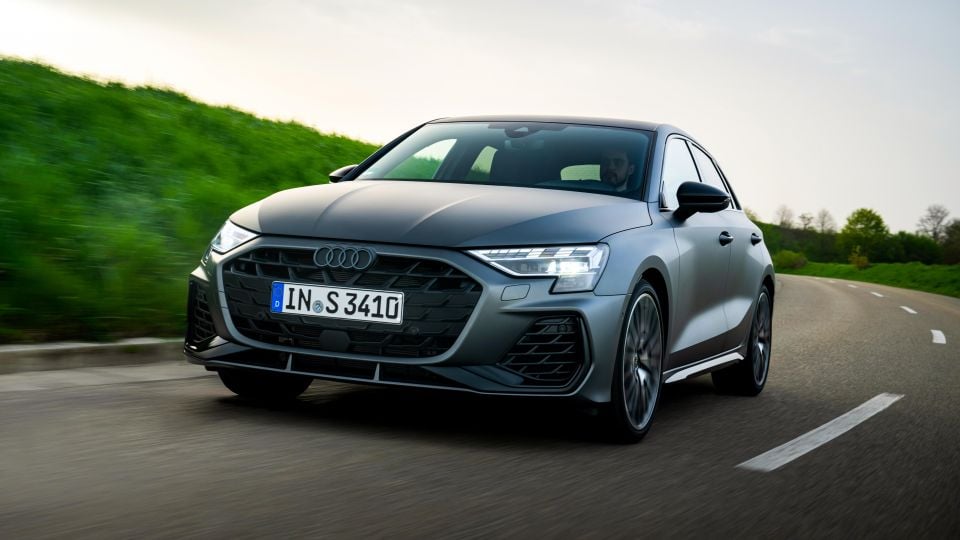
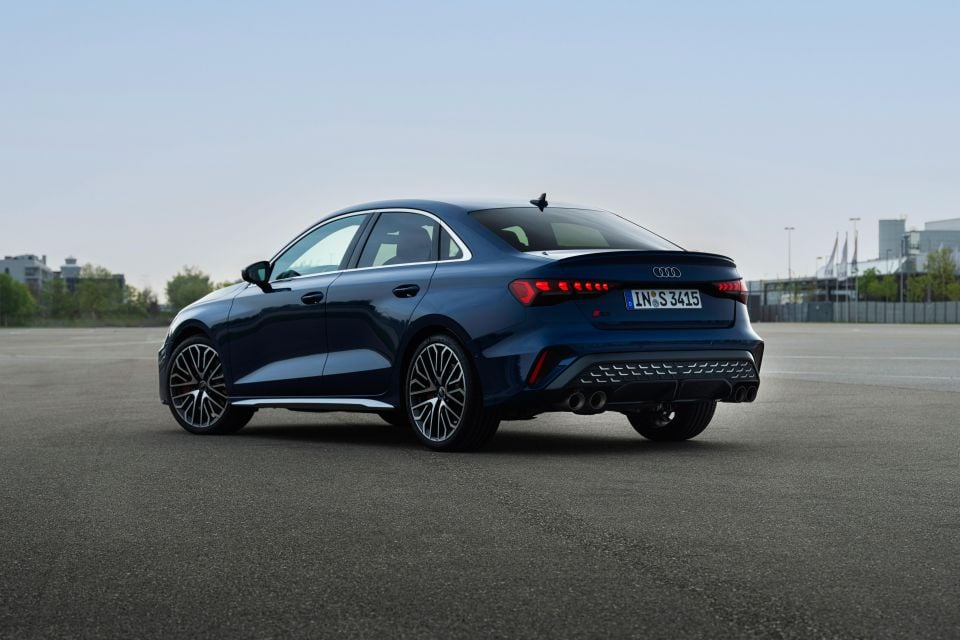

Quickly see how this car stacks up against its competition. Select any benchmark to see more details.
CarExpert helps new car buyers save thousands with expert reviews, honest advice, and transparent pricing – no dealer pressure and no sales games.
Compact and quick, Audi’s S3 has proven a popular entry point into the world of European premium performance cars for 25 years.

More than 10,000 have been sold in Australia since the first-generation S3 arrived as the performance variant of the A3 hatch. The S3, which has also been available in four-door sedan form since 2014, now accounts for about 25 per cent of total A3 sales here.
Superficially, there’s not a lot to distinguish the revised 2025 S3 from its predecessor. The sheet metal is unchanged, but a new front fascia features a wider and flatter execution of the single-frame grille that has body-coloured trim underneath and strut-like structures supporting the front splitter. The new grille is flanked by larger, squarer vents with vertical outer edges.
The Matrix LED headlights now feature 24-pixel elements arranged in three rows on their upper edge. These allow owners to choose between four digital daytime running light signatures using the MMI infotainment system.
At the rear are redesigned tail lights and a new rear bumper with vertical reflectors and a more boldly executed faux diffuser wedged between the signature quad exhaust.
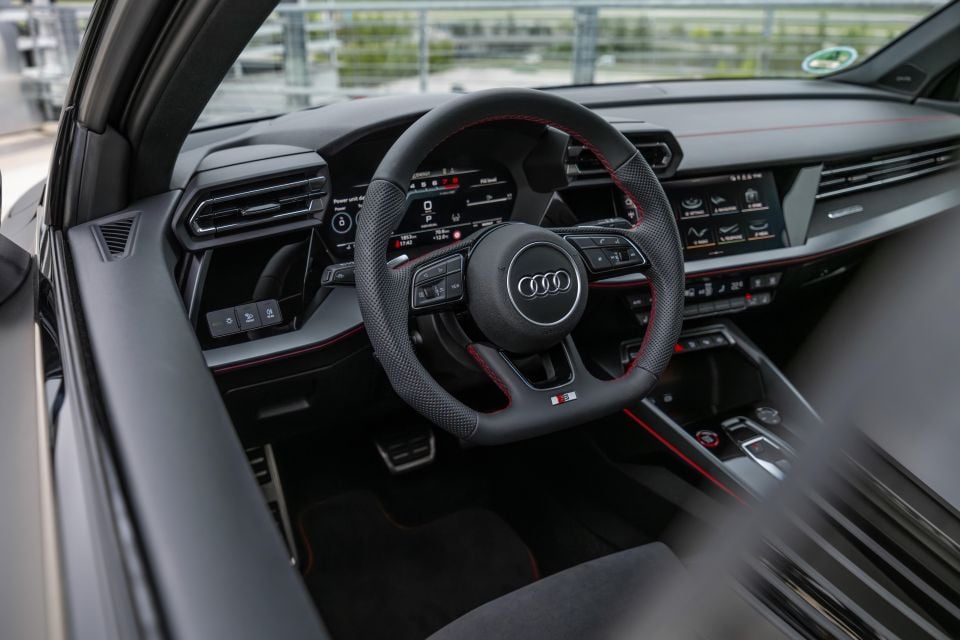
New colours available include District Green, Ascari Blue, and Progressive Red metallics, and the iconic Daytona Gray is now available in a matte finish, complimented by redesigned alloy wheels.
That doesn’t sound much to make a fuss about, and probably only sharp-eyed Audi fans will notice. But these cosmetic tweaks also signal a couple of significant mechanical upgrades that deliver noticeably improved performance and handling.
As the with the existing car, the 2025 Audi S3 will be available in two variants, the Sportback hatch and the four-door Sedan. The Sedan is the marginally more popular of the two, accounting for 54 per cent of total S3 sales.
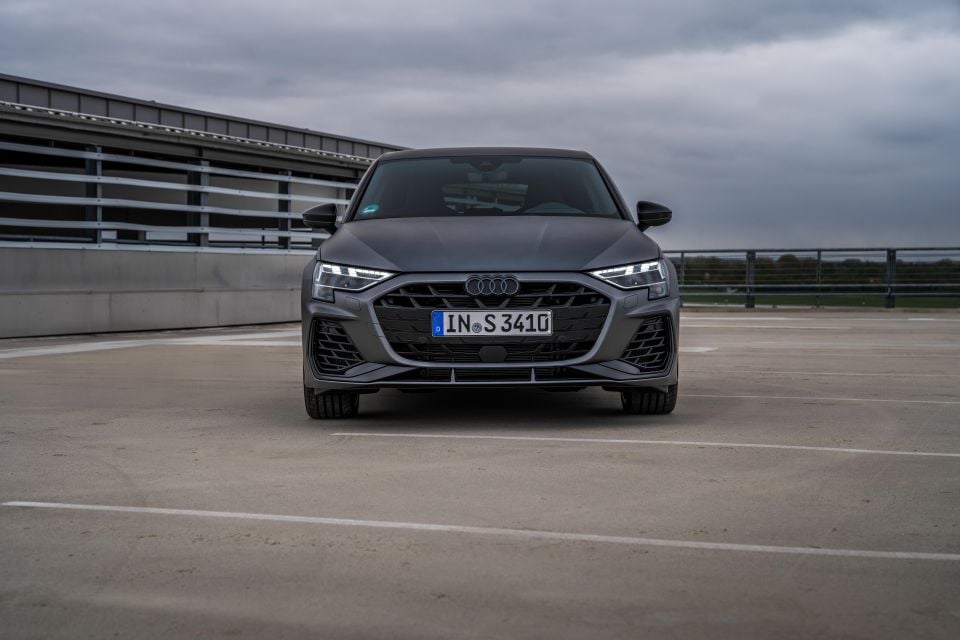
The 2025 models are not expected to arrive in Australia until the fourth quarter of this year, so Audi has not released any details on pricing – but current pricing suggests the Sedan will cost about 3.0 per cent more than the Sportback.
As with the exterior, there have been no major revisions to the interior architecture.
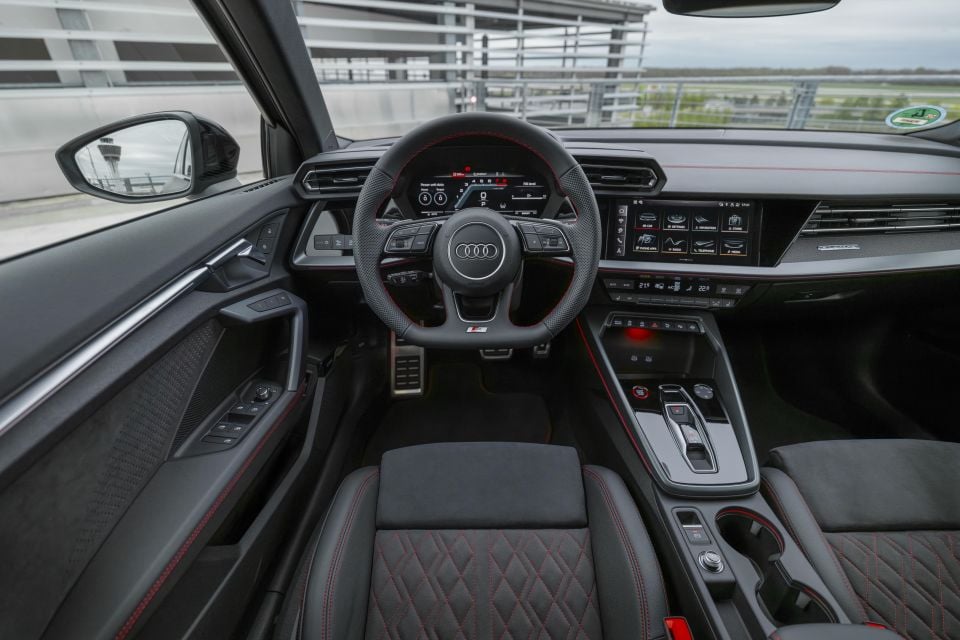
But in response to criticism from media and customers, Audi has splashed some cash on making the S3 cabin look more upscale than before. Audi’s Virtual Cockpit instrument panel is now standard on the S3 in all markets, for example.
When you settle into the S3’s sportily bolstered bucket seats, you’ll notice the new flat-bottomed, three spoke sports steering wheel.
You’ll also notice the new shifter in the reconfigured centre console.
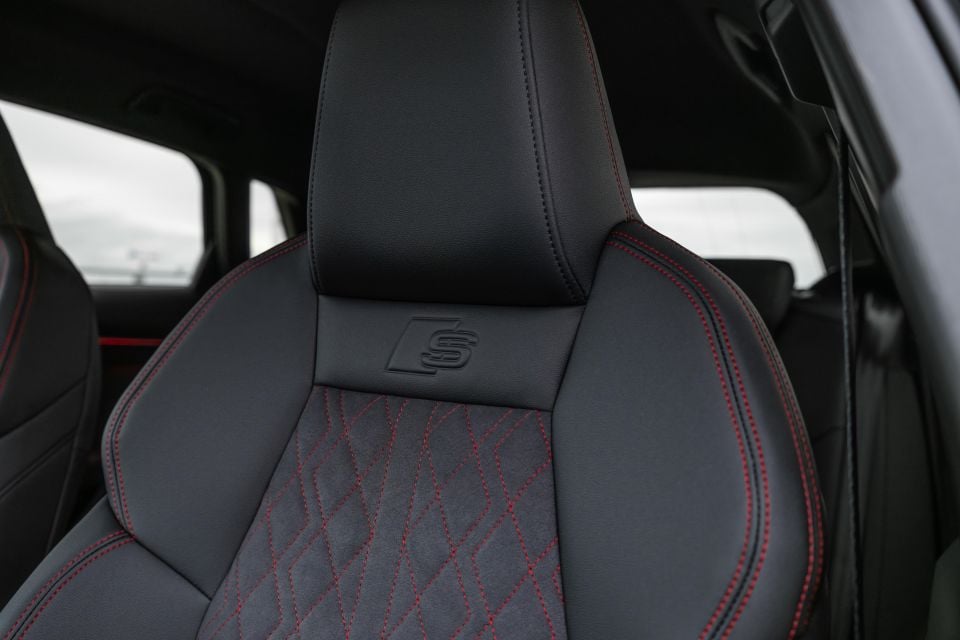
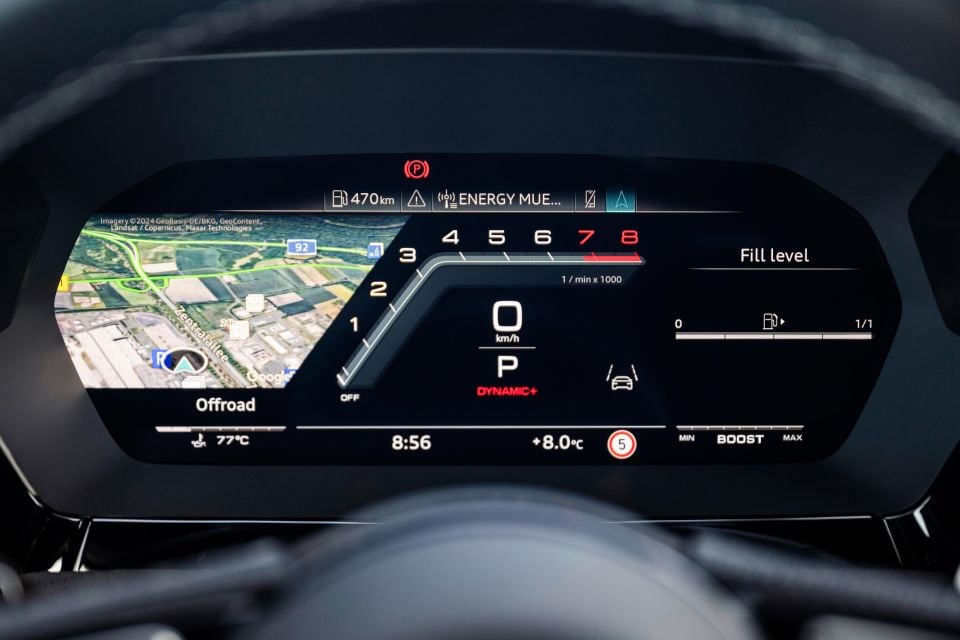
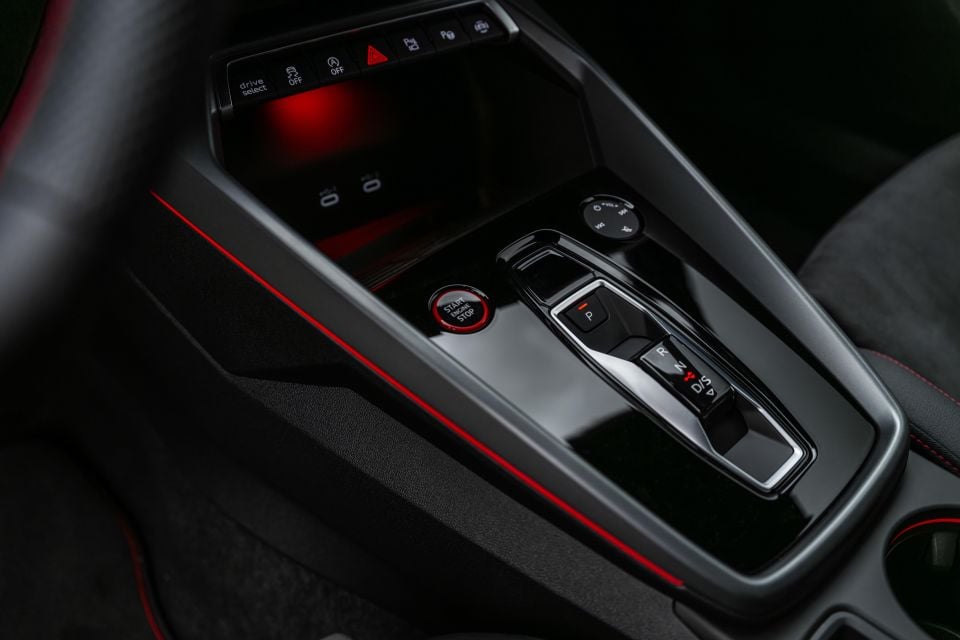
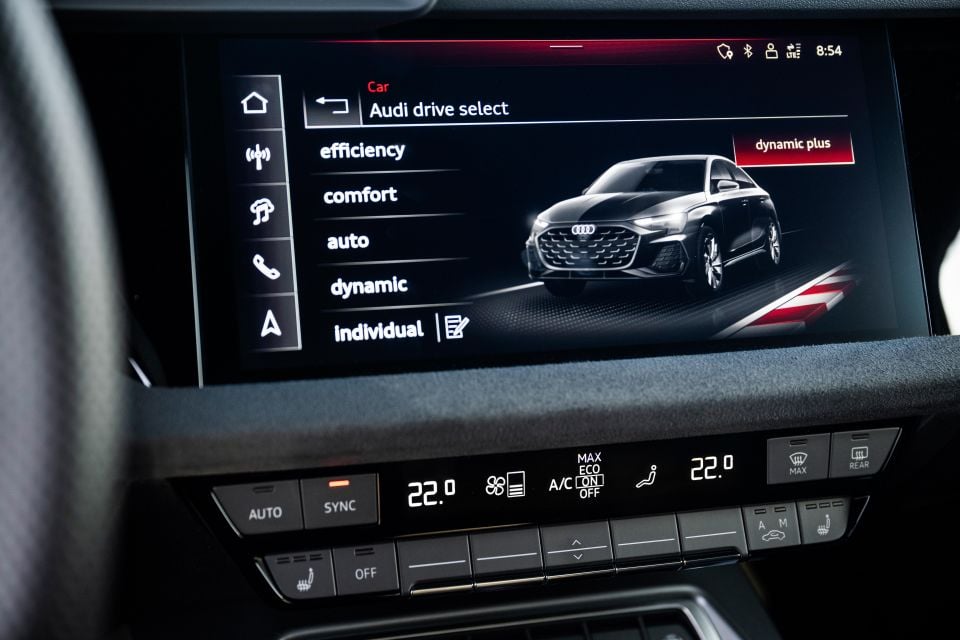
In place of the previous car’s toggle shifter, there’s a smooth, flush button that’s pulled to engage drive and pushed to select reverse. New chrome trim on the air vents makes the cabin look wider.
The S3’s interior ambience is moody, its dark palette lifted by silver accents and beautifully executed red contrast stitching.
An optional interior lighting package, the most striking elements of which are door skins with 300 laser-cut openings that are backlit from a light source within the door, adds an extra splash of colour and visual interest to the cabin.
The turbocharged 2.0-litre four under the bonnet of the S3 has been tweaked to improve its responsiveness and deliver more grunt.
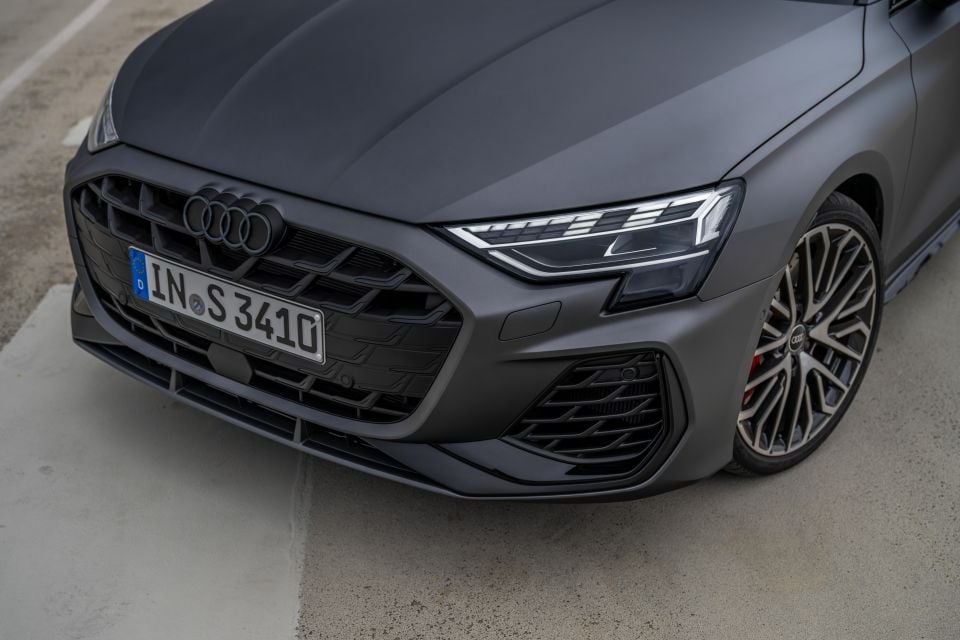
The fuel injection system now runs at 350 bar and the revised engine management system now keeps the turbocharger spinning at a constant speed under light throttle and partial load for faster power delivery.
Peak power is now 245kW, an increase of 17kW, and is produced from 5000rpm to 6500rpm. Torque is up 20Nm to 420Nm, all of which is available from 2100rpm to 5500rpm. The calibration of the seven-speed dual clutch transmission has been revised to handle higher starting torque, which helps the compact Audi launch harder from a standing start.
Audi claims the S3 is now a tenth of a second quicker to 100km/h than before, stopping the clock at 4.7 seconds. Top speed remains an electronically limited 250km/h.
With its punchy turbo motor, slick transmission and all-wheel drive traction; the Audi S3, whether it be in four-door sedan form or the five-door hatch – Sportback in Audi-speak – has previously impressed as a great all-rounder, more fun than its A3 siblings and better value than the RS3 – the revised S3 builds on that foundation.
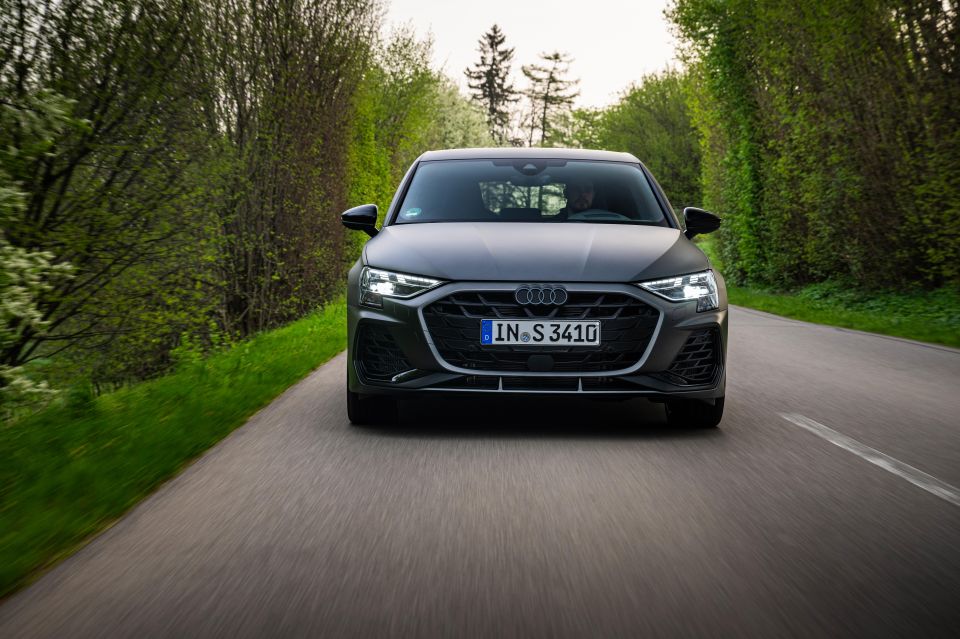
Chassis upgrades include a new front suspension knuckle that doubles the amount of negative camber at the front axle to 1.5 degrees, and larger 357mm front brake rotors.
The most important change, however, is the adoption of the rear axle torque-splitting system used on the hotter, faster RS3 model – and it’s this that takes the new S3 to a new level in terms of its driving dynamics.
In simple terms the torque-splitting system uses two multi-plate clutches, one located immediately to either side of the rear differential, to vary the amount of torque sent to each rear wheel.
Each clutch has its own electronic control unit, which uses data such as wheel speed, longitudinal and lateral acceleration, steering and throttle angle, the gear selected, and the yaw rate – the speed at which the car is rotating around its vertical axis – to calculate how much torque to send to each wheel.
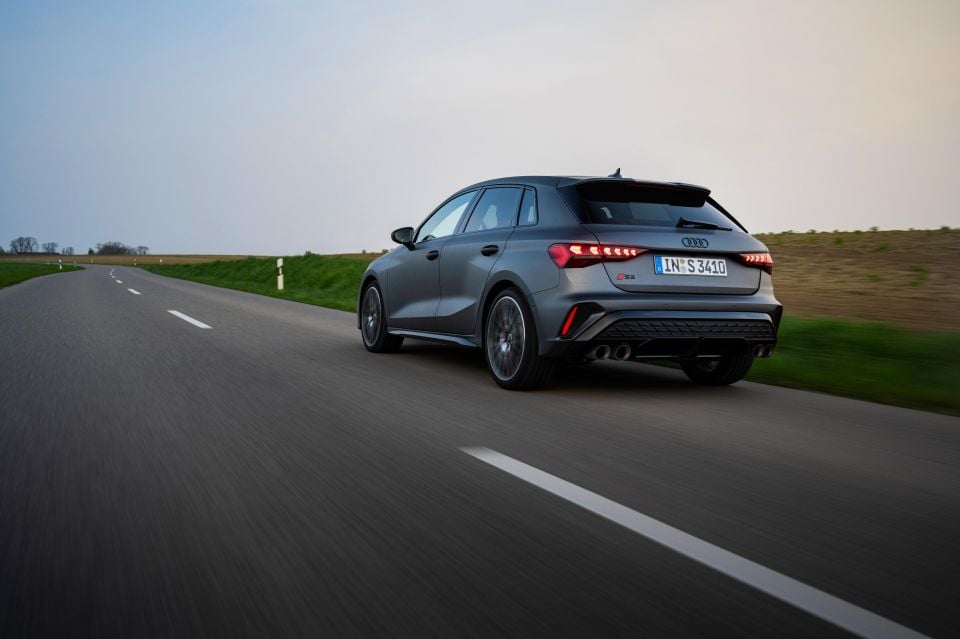
In theory, the torque-splitter is designed to improve both agility and stability, sending more torque to the outside rear wheel to help better turn the S3 into a corner, and to the inside rear wheel to help counter oversteer when the limits of adhesion are exceeded.
And you only need to punt the little Audi hard down your favourite driving road to feel the theory working in practice. Audi’s quattro all-wheel drive system has for years endowed its performance cars with high levels of cornering grip, though often at the expense of initial turn-in response and the ability to tighten your line mid-corner. The torque-splitter rear axle turns the S3 into an apex predator.
The change to the S3’s demeanour is so profound you need to recalibrate your driving style to make the most of the torque-splitter’s capabilities. The trick is to go to power much earlier than you would usually do in an all-wheel drive car with 60 per cent of its mass over the front axle, and use the extra torque sent to the outside rear wheel to effectively whip the tail around and tuck the nose into the apex of the corner.
We’re not talking power oversteer here; it all happens quickly and concisely with nary a chirp from the tires. The S3 just goes where you point it, with a minimum of fuss.
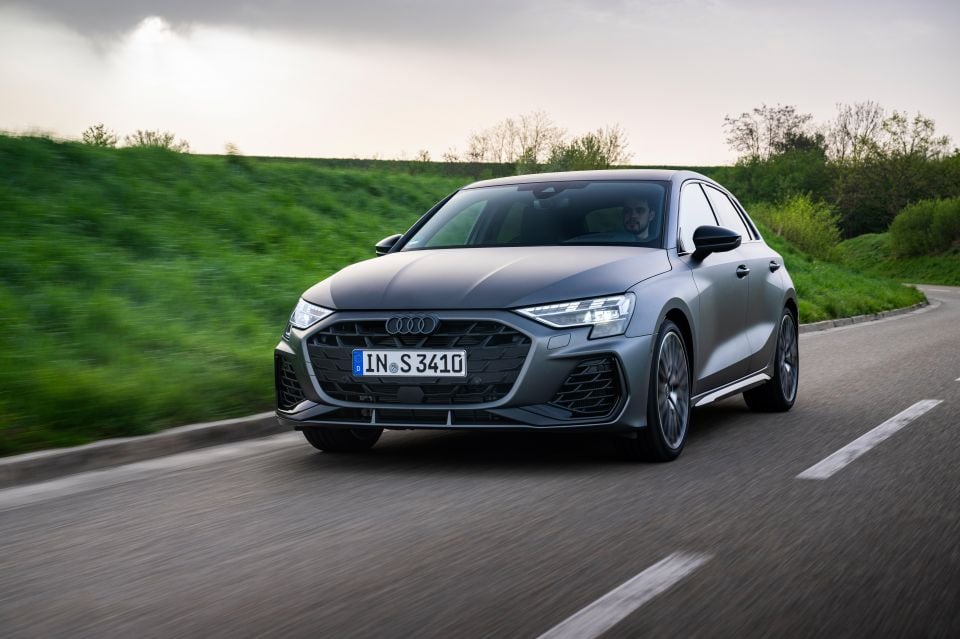
That said, Audi has used the torque-splitter to dial up the S3’s fun factor. The system’s level of intervention depends on the drive mode selected, and to make the most of its capabilities Audi has added an extra drive mode, dubbed ‘Dynamic Plus’.
In addition to further sharpening the powertrain’s response, this mode ensures as much torque as possible reaches the rear axle and that most of it is sent to the rear wheel on the outside of the curve. You don’t have to be Isaac Newton to figure out the result: As Audi engineers dryly observe, Dynamic Plus mode endows the S3 with “a tendency to oversteer”.
The S3 is one of those rare performance cars that feels at home at almost all speeds on almost all roads in one of its sportier driving modes – in this case Dynamic. In fact, in Comfort mode the S3’s suspension can at times feel a touch underdamped.
If you find the ride in Dynamic too taut at low speeds, you can always use Individual mode to keep the powertrain responses sharp but switch the spring and damper rates to their most comfortable setting. That said, Audi’s drive mode selection protocol isn’t exactly easy to use, requiring you to toggle through all the options until you get the one you want.
As befits its price tag, the Audi S3 is a comprehensively equipped compact car.


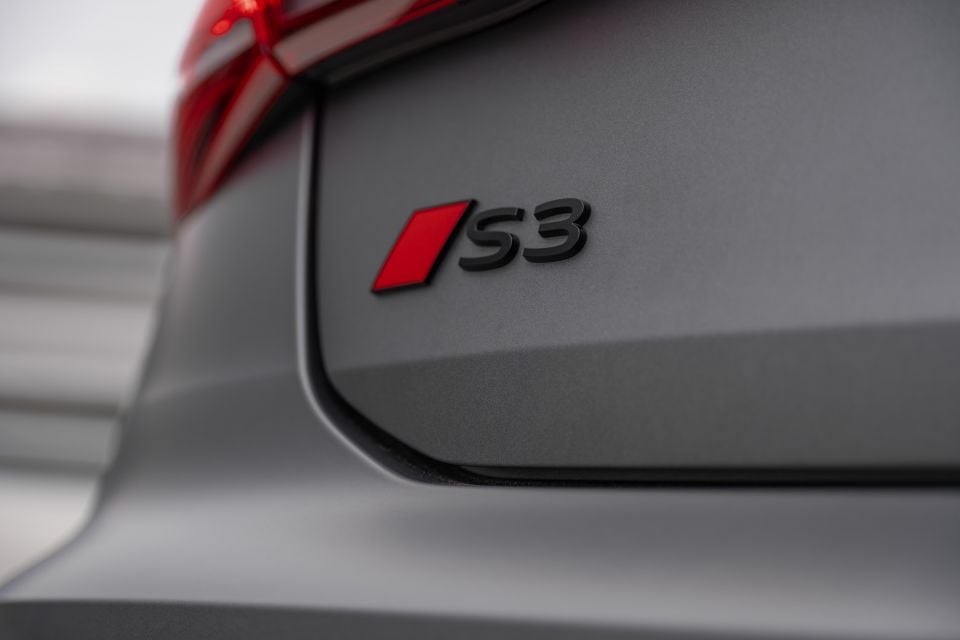

Standard equipment includes:
Options include:
Only the front-wheel drive versions of the Audi A3 have a five-star ANCAP safety rating based on Euro NCAP testing conducted in 2020.
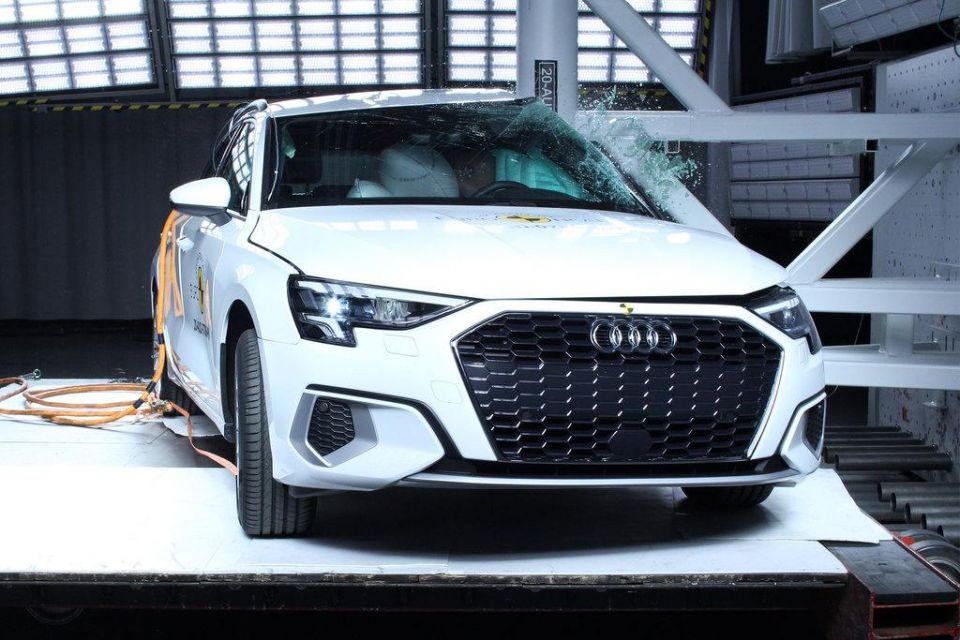
It received an adult occupant protection score of 89 per cent, child occupant protection score of 81 per cent, vulnerable road user protection score of 68 per cent, and a safety assist score of 73 per cent.
Standard safety equipment includes:
A surround-view camera is available, but not standard, across the lineup. You do get it standard on the flagship RS3, though. Seven airbags are fitted too – dual front, front side, front centre, and full-length curtains.
Audi Australia covers all its vehicles – including the sporty S and RS models – with a five-year, unlimited-kilometre warranty.
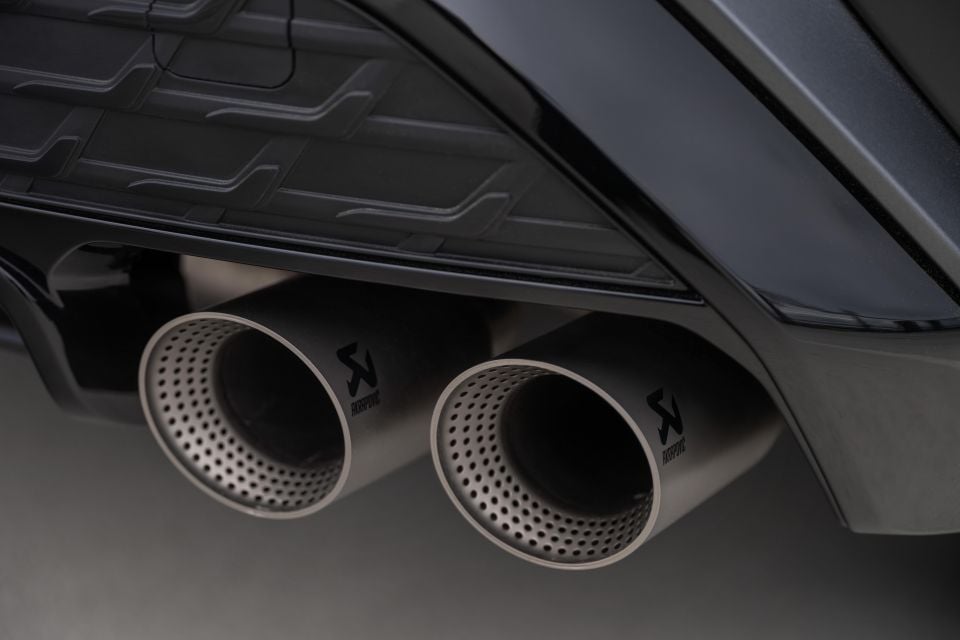
There’s also five years warranty cover for body and paintwork, as well as 12 years of bodywork corrosion cover.
Scheduled maintenance can be covered by an Audi Genuine Care Service Plan, which spans five years or 75,000km, whichever comes first – this pack costs $2890 for the current model.
At first glance the 2025 Audi S3 is evolutionary rather than revolutionary; a sensible mid-cycle upgrade that appears to address complaints about perceived quality and throws some extra performance into the mix for good measure.
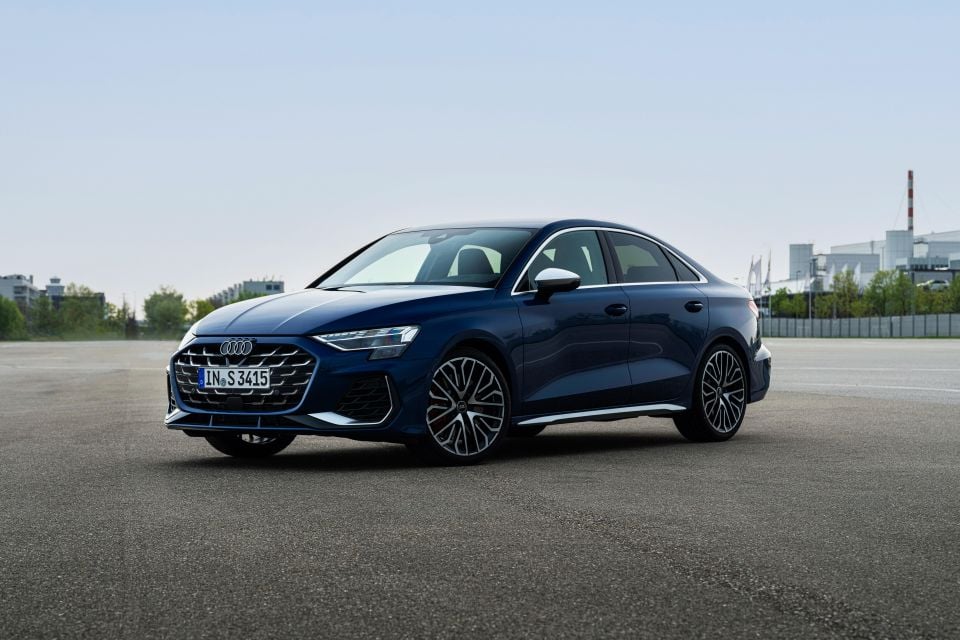
CarExpert helps new car buyers save thousands with expert reviews, honest advice, and transparent pricing – no dealer pressure and no sales games.
But appearances can be deceptive. The decision to make the torque-splitter rear axle standard on the S3 revolutionises the car’s dynamic capability. The new S3 feels so much sharper and so much more responsive when punted hard.
No, it doesn’t have the raw wallop of the 294kW/500Nm five-cylinder RS3 when you punch the throttle. But that new rear axle means the S3 won’t be that much slower than its muscular sibling down any winding road out there in the real world.
Given it’s likely to be at least $15,000 cheaper than the RS3, that means the revised S3 now delivers real bang for your buck.
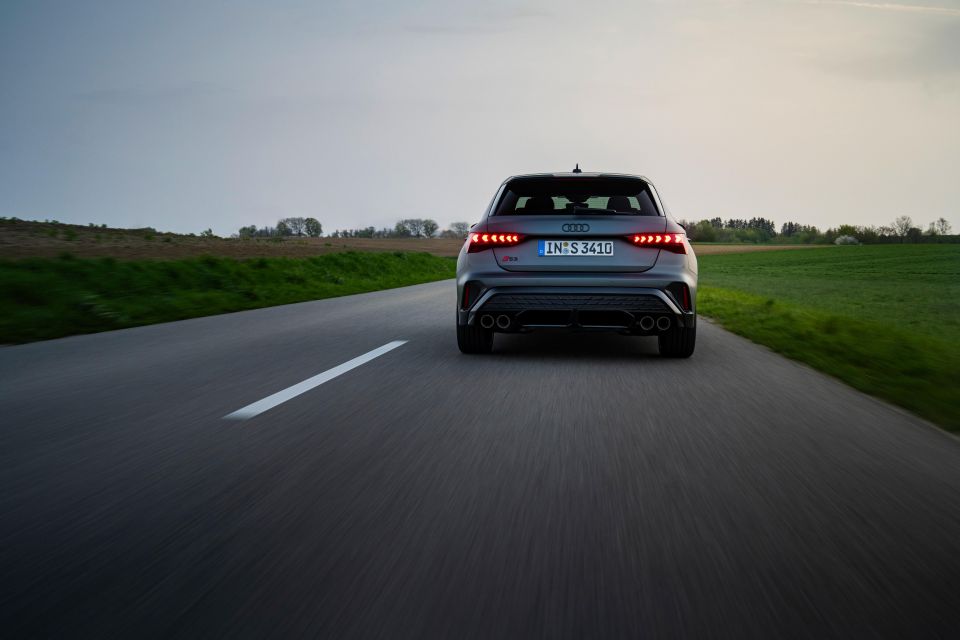
Click the images for the full gallery
MORE: Buy an Audi S3 MORE: Everything Audi S3
CarExpert helps new car buyers save thousands with expert reviews, honest advice, and transparent pricing – no dealer pressure and no sales games.


James Wong
5 Days Ago


Matt Campbell
4 Days Ago
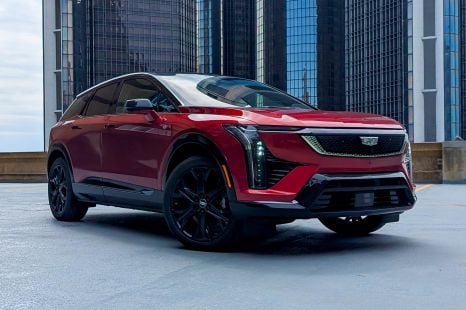

William Stopford
2 Days Ago
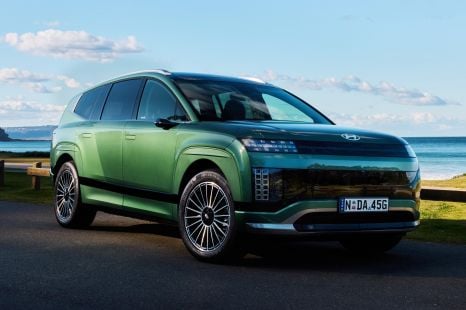

Josh Nevett
1 Day Ago
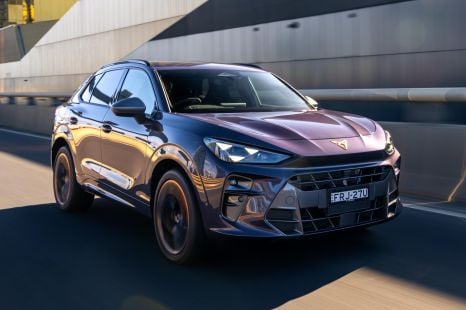

James Wong
1 Day Ago


Max Davies
19 Hours Ago